Old NCERT Summary (Satish Chandra): The Delhi Sultanate - I (Circa 1200-1400) | History for UPSC CSE PDF Download
The Mamluk Sultans in the Thirteenth Century
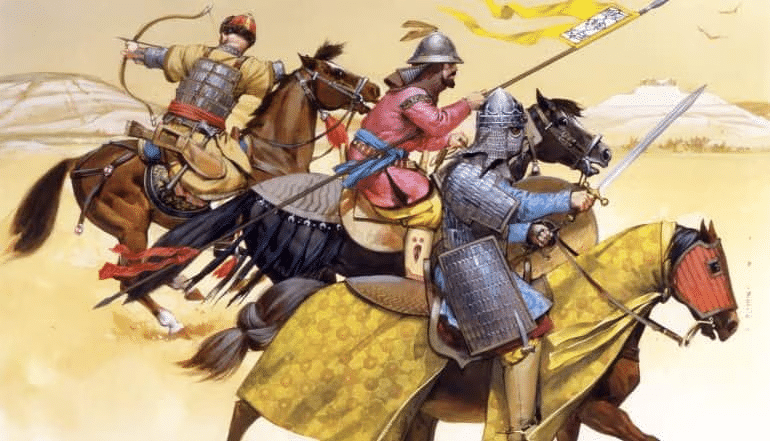
- The Mameluk Sultans faced several challenges in the early years of their rule, including foreign invasions, internal conflicts, and resistance from dispossessed Rajput rulers. However, they managed to overcome these difficulties and expand their territory by the end of the century.
- The establishment of Turkish rule in northern India had far-reaching effects on society, administration, and cultural life, which were eventually felt all over India.
- The Mameluk Sultans were able to extend their rule over Malwa and Gujarat and penetrate into the Deccan and south India.
Struggle for the Establishment of a Strong Monarchy
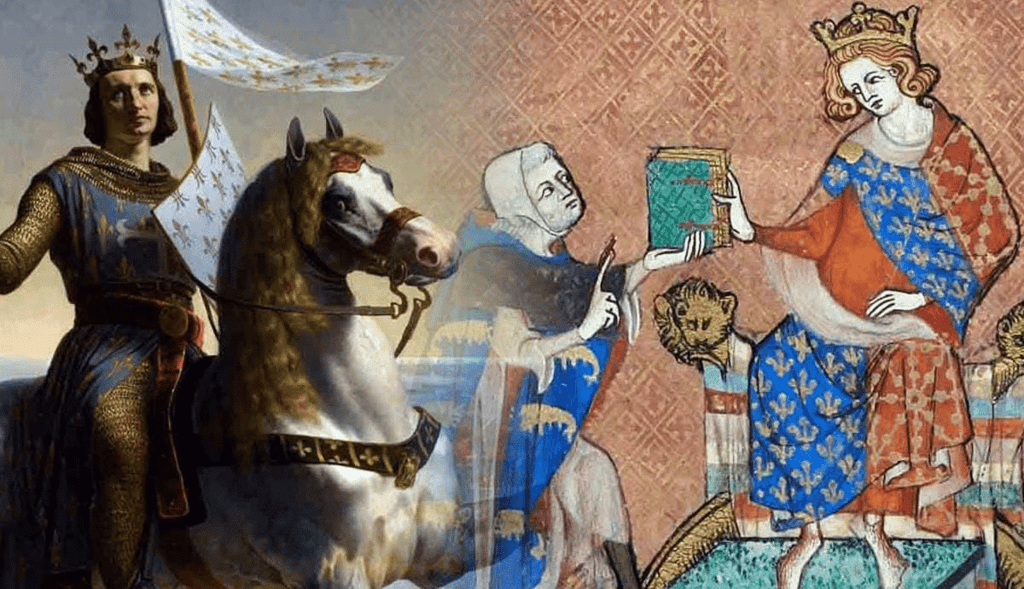
- Muizzuddin Muhammad of Ghur was succeeded by Qutbuddin Aibak, a Turkish slave, in 1206. Aibak had played a crucial role in expanding the Turkish Sultanate in India after the battle of Tarain.
- Another slave of Muizzuddin, Yalduz, became the ruler of Ghazni and claimed to rule over Delhi as well. However, Aibak, ruling from Lahore, did not accept Yalduz's claim.
- This marked the severing of links between the Sultanate and Ghazni, which proved fortunate as it prevented India from being drawn into Central Asian politics. It also allowed the Delhi Sultanate to develop independently without relying on external powers.
Iltutmish (1210–36)
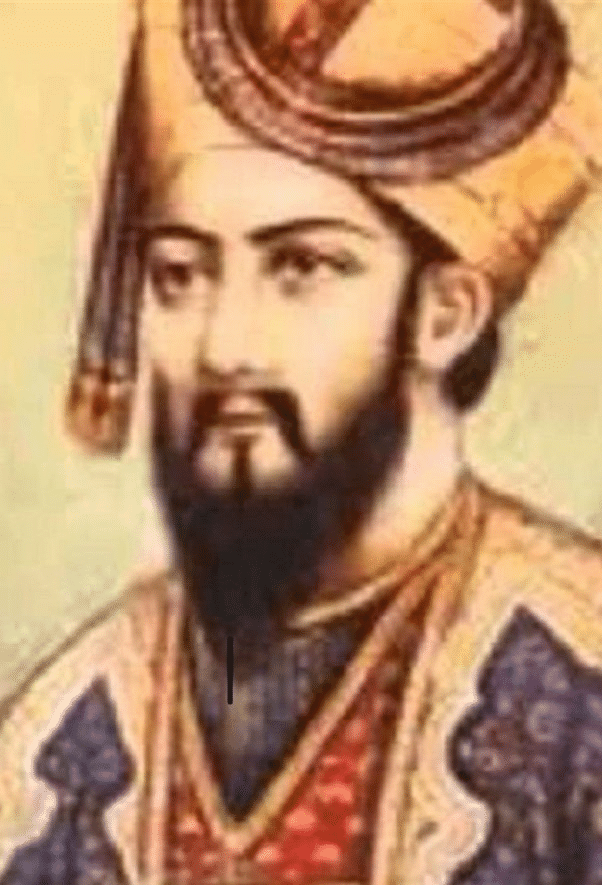
- In 1210, Aibak died after falling from his horse while playing polo, and Iltutmish, Aibak's son-in-law, succeeded him. However, Iltutmish had to first defeat Aibak's son to establish his authority, challenging the principle of hereditary succession. Iltutmish is regarded as the true consolidator of Turkish conquests in northern India.
- At the time of his accession, various challenges arose: Ali Mardan Khan had declared himself king of Bengal and Bihar, Qubacha had proclaimed himself an independent ruler of Multan, and Lahore and parts of Punjab were under his control.
- Initially, even some of Iltutmish's fellow officers near Delhi were hesitant to accept his authority, and the Rajputs seized the opportunity to assert their independence, with regions like Kalinjar, Gwaliyar, and eastern Rajasthan throwing off Turkish rule.
- During the early years of his reign, Iltutmish focused on the northwest, facing a new threat from Khwarizm Shah, who had conquered Ghazni. The Khwarizmi empire, the most powerful state in Central Asia at the time, extended its frontier to the Indus.
- To counter this threat, Iltutmish occupied Lahore. In 1218, the Mongols destroyed the Khwarizmi empire, posing a significant threat to India and the Delhi Sultanate. However, while the Mongols were preoccupied elsewhere, Iltutmish ousted Qubacha from Multan and Uchch, extending the frontiers of the Delhi Sultanate up to the Indus once again.
Iltutmish’s Campaigns in Bengal and Bihar
- Early Challenges: After securing the west, Iltutmish focused on Bengal and Bihar, where a ruler named Iwaz, who called himself Sultan Ghiyasuddin, had declared independence. Iwaz was a capable leader, known for his public works and raids on neighboring territories.
- Defeating Iwaz: In 1226–27, Iwaz was defeated and killed by Iltutmish’s son near Lakhnauti. This victory brought Bengal and Bihar under Delhi’s suzerainty again, but these regions continued to challenge Delhi’s authority.
Reasserting Control
- Gwaliyar and Bayana: Iltutmish attempted to recover Gwaliyar and Bayana while maintaining control over Ajmer and Nagor.
- Expeditions: He sent expeditions to Ranthambhor and Jalor to reaffirm his suzerainty and attacked Nagda, the capital of Mewar. However, he had to retreat when the Gujarat armies came to the aid of the Rana.
- Conflict with Gujarat: In retaliation, Iltutmish launched an expedition against the Chalukyas of Gujarat, but this attempt was repulsed with losses.
Raziya’s Reign (1236–39)
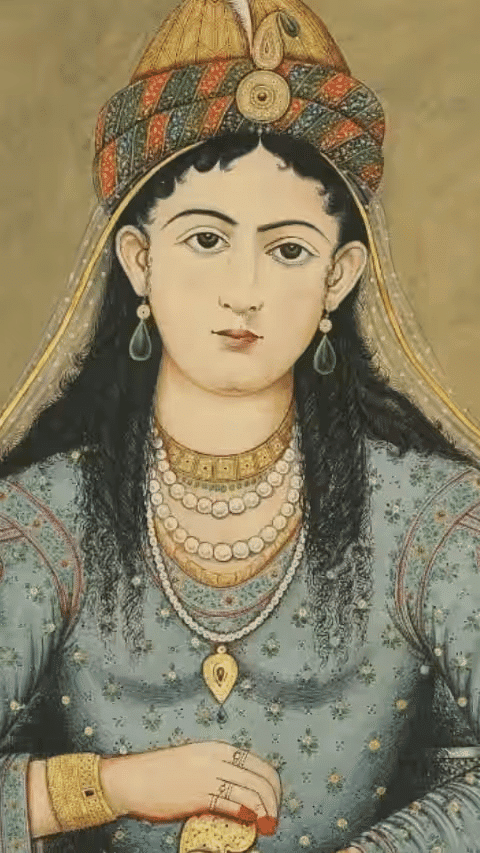
- Succession Issue: In his final year, Iltutmish was concerned about succession as he found none of his sons suitable for the throne. After much deliberation, he chose to nominate his daughter, Raziya, and persuaded the nobles and theologians to support this decision.
- Raziya’s Challenges: Raziya faced opposition from her brothers and powerful Turkish nobles known as ‘the forty’ or the chahalgani. Despite these challenges, she was determined to assert her authority.
- Breaking Traditions: Raziya’s rule was notable for her breaking traditional norms. She rejected female attire, held court with her face unveiled, and participated in hunting and military leadership.
- Conflict with Nobles: Iltutmish’s wazir, Nizam-ul-Mulk Junaidi, who initially opposed Raziya’s elevation, led a rebellion against her but was defeated and forced to flee.
- Military Actions: Raziya sent an expedition against Ranthambhor to assert control, marking the beginning of a power struggle between the monarchy and the Turkish chiefs.
- Raziya Sultana, a capable ruler, managed to establish law and order throughout her kingdom. However, her efforts to create a loyal group of nobles and promote a non-Turk to a high position faced resistance. Turkish nobles criticized her for being immodest and too close to Yaqut Khan, an Abyssinian noble she appointed as Superintendent of the Royal Stable.
- This position suggested a close relationship with the queen, but historical accounts do not support allegations of personal intimacy between Raziya and Yaqut Khan. In fact, the claim that Yaqut Khan lifted Raziya onto her horse is inaccurate, as she was known to travel in public on an elephant, not horseback.
Rebellions and Downfall
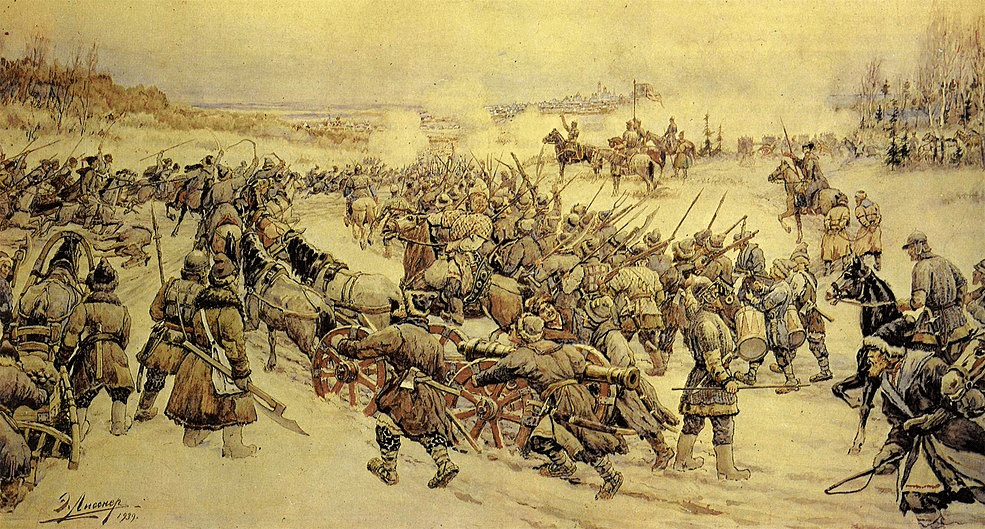
Lahore and Sirhind Rebellions
- Lahore Rebellion: Raziya faced a rebellion in Lahore, which she personally led an expedition to quell. She successfully compelled the governor of Lahore to submit to her authority.
- Sirhind Rebellion: After subduing Lahore, Raziya directed her efforts towards Sirhind. However, during her campaign, an internal rebellion erupted.
Yaqut Khan's Death and Raziya's Imprisonment
- Yaqut Khan's Death: During the internal rebellion, Yaqut Khan was killed. Raziya, who had relied on him, was captured and imprisoned at Tabarhinda.
- Altunia and Raziya's Marriage: While imprisoned, Raziya managed to win over her captor, Altunia. They married, and Raziya saw this as an opportunity to reclaim her throne.
Attempt to Reclaim Delhi
- Renewed Efforts: After marrying Altunia, Raziya made a renewed attempt to seize control of Delhi.
- Defeat and Death: Despite her valiant efforts, Raziya faced defeat in her quest. She was killed by bandits in a forest while trying to escape.
Era of Balban (1246–87)
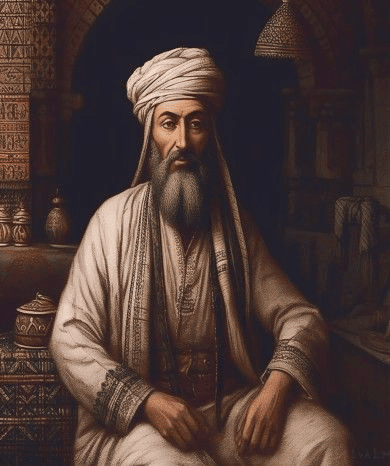
The conflict between the monarchy and the Turkish chiefs persisted until Ulugh Khan, a Turkish chief who later became known as Balban, gradually consolidated power and eventually ascended the throne in 1265.
Early Career and Rise to Power
- Deputy Role: Balban initially served as naib (deputy) to Nasiruddin Mahmud, a son of Iltutmish, whom Balban had assisted in securing the throne in 1246.
- Strengthening Position: Balban strengthened his position by marrying one of his daughters to Sultan Nasiruddin Mahmud.
Conflict with Turkish Chiefs
- Growing Authority: As Balban's authority increased, it alienated many Turkish chiefs who had hoped to maintain their influence, as Nasiruddin Mahmud was young and inexperienced.
- Conspiracy Against Balban: In 1253, Turkish chiefs conspired to oust Balban, replacing him with Imaduddin Raihan, an Indian Muslim.
Balban's Comeback
- Building Support: Balban continued to build his support group after his dismissal and managed to win over some opponents within a year and a half.
- Military Preparations: He prepared for a military confrontation, possibly establishing contacts with the Mongols who had invaded parts of Punjab.
Balban's Ascendancy
- Dismissal of Raihan: Sultan Mahmud dismissed Raihan and restored Balban's authority.
- Elimination of Rivals: Balban eliminated many rivals through various means, including assuming royal insignia.
- Ascension to the Throne: In 1265, Balban officially ascended the throne after the death of Sultan Mahmud, though some historians suggest he may have poisoned Mahmud to clear his path.
Era of Strong Centralized Government
- Balban's reign marked the beginning of a strong, centralized government, despite his harsh methods. Balban was determined to enhance the prestige and power of the monarchy as he believed it was essential to confront the internal and external threats of his time.
- During this period, authority and power were typically reserved for those born into noble families or those with an ancient lineage. To strengthen his claim to the throne, Balban asserted that he was a descendant of the legendary Iranian king Afrasiyab.
- To support his claim of noble heritage, Balban positioned himself as the defender of the Turkish nobility. He excluded individuals of non-noble birth from important government positions, effectively sidelining Indian Muslims from positions of power. Balban's insistence on noble birth sometimes led to extreme measures, such as denying an audience to a prominent trader simply because he was not of high birth.
- Historian Barani, a supporter of the Turkish nobility, attributed the following words to Balban: ‘Whenever I see a base-born ignoble man, my eyes burn and I reach in anger for my sword (to kill him).’ While it is unclear if Balban actually said this, it reflects his disdain for those of low birth, whether they were Turks or non-Turks.
- Despite claiming to champion the Turkish nobility, Balban was unwilling to share power with anyone, including his own family. His despotic nature made him intolerant of criticism, even from his supporters. Balban aimed to dismantle the power of the chahalgani, the Turkish nobles, and elevate the monarchy's power and prestige. He even resorted to poisoning his cousin, Sher Khan, to achieve this goal.
- To gain public trust, Balban administered justice impartially, punishing even the highest officials for their transgressions. For instance, he punished the fathers of the governors of Badaun and Awadh for mistreating their slaves. Balban kept himself informed by appointing spies in various departments and organized a strong centralized army to handle internal disturbances and repel the Mongol threat in Punjab.
- He restructured the military department (diwan-i-arz) and retired soldiers and troopers unfit for service. This decision faced opposition from some Turkish troopers, descendants of those who had come to India during Iltutmish's reign, but Balban had to make some concessions.
(i) Balban’s Policy of ‘Blood and Iron’
- Deterioration of Law and Order: The situation around Delhi and in the Ganga-Jamuna Doab had worsened, with roads infested by robbers and dacoits, making communication difficult.
- Rajput Resistance: Some Rajput zamindars defied the government by setting up forts in the area.
- Mewati Plunder: The Mewatis became bold enough to plunder people up to the outskirts of Delhi.
- Balban’s Response: To address these issues, Balban adopted a harsh policy of ‘blood and iron’.
- Ruthless Measures: The Meos were hunted down and killed, forests around Delhi were cleared, and military outposts (thanas) were established. In the Doab and Katehar, forests were cleared, rebellious villagers were destroyed, and the population was enslaved.
- Afghan Soldiers: Colonies of Afghan soldiers were settled in these areas to safeguard roads and deal with rebellious Rajput zamindars.
(ii) Balban’s Court and Authority
- Impressive Court: Balban maintained a magnificent court to impress the people with the strength of his government.
- Bodyguards and Authority: He was always surrounded by a large force of bodyguards with drawn swords to assert his authority.
- Serious Demeanor: Balban refused to laugh and joke in court and even gave up drinking wine to avoid appearing non-serious.
- Iranian Ceremonies: He insisted on ceremonies like sijada (prostration) and paibos (kissing the monarch’s feet), which were of Iranian origin and considered un-Islamic. This emphasized that the nobles were not his equals.
(iii) Balban’s Legacy
- Strengthening the Sultanate: Balban was one of the main architects of the Sultanate of Delhi, particularly in shaping its government and institutions.
- Defense Against Mongols: He could not fully defend northern India against Mongol invasions, but he strengthened the Delhi Sultanate by asserting the power of the monarchy.
- Exclusion of Non-Turks: By largely excluding non-Turks from positions of power and trying to base the government on a narrow group, Balban created dissatisfaction, leading to disturbances after his death.
- Limited Expeditions: Although he had a strong army, Balban did not lead distant expeditions to expand the empire for fear of Mongol attacks on Delhi, except for one to Bengal.
- Hunting Expeditions: He exercised his army through elaborate hunting expeditions.
The Mongols and the Northwest Frontier Problem
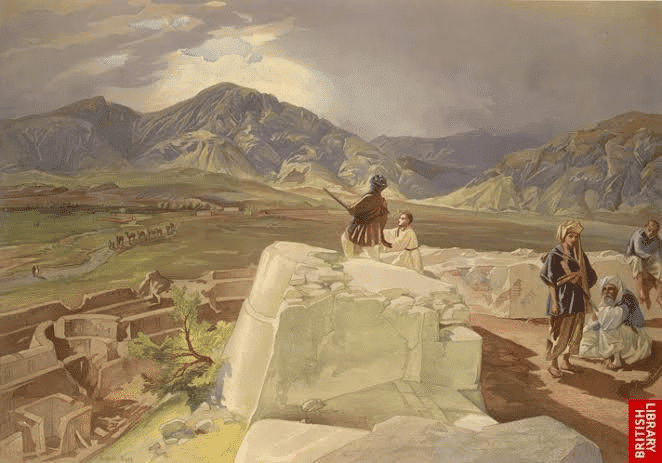
India has been protected from external invasions throughout most of its history due to its natural boundaries. However, it was vulnerable in the northwest, where invaders like the Turks, Huns, and Scythians had previously penetrated through mountain passes to establish empires. To safeguard the fertile valleys of the Punjab and Sind, it was crucial to control the area from Kabul to Ghazni and Qandahar, as this region, flanked by the Hindukush mountains, was the main route for reinforcements from Central Asia.
- The Delhi Sultanate could not secure these frontiers due to the unstable situation in West Asia, leaving India under constant threat. With the rise of the Khwarizmi empire, the Ghurids lost control over Kabul, Ghazni, and Qandahar, and the Khwarizmi boundary extended to the Indus River. A struggle for north India seemed imminent between the Khwarizmi rulers and Qutbuddin Aibak's successor. However, an even greater threat emerged with Changez Khan, the Mongol leader.
- In 1218, the Mongols attacked the Khwarizmi empire, brutally sacking cities from the Jaxartes to the Caspian Sea, and from Ghazni to Iran, while devastating the countryside. Many Turkish soldiers defected to the Mongols, who used terror as a weapon of war.
- Cities that resisted or were conquered faced mass slaughter of soldiers and chiefs, with women and children sold into slavery, and civilians subjected to forced labor. This caused a severe setback to the region's economy and culture. However, over time, the Mongols established peace and order, safeguarding trade routes from China to the Mediterranean, leading to a gradual recovery, though it took generations for Iran, Turan, and Iraq to regain their former prosperity.
- The Mongol invasion had significant consequences for the Sultanate of Delhi. Many princes, scholars, theologians, and prominent families fled to Delhi, which became the only remaining Muslim state in the region and the center of Islam. This shift emphasized Islam as the unifying bond among the new rulers and forced the Turkish invaders, cut off from their homelands and reinforcements, to adapt quickly to the Indian context.
Early Mongol Threat to India
- The Mongol threat to India began in 1221 when Changez Khan pursued Jalaluddin, the crown prince of the defeated Khwarizmi ruler.
- Jalaluddin fought valiantly on the banks of the Indus River but was defeated. He managed to cross into India, escaping Changez.
- Changez Khan considered invading India but ultimately decided to focus on conquering the rest of the Khwarizmi empire instead.
- This decision spared India from potential devastation, as the Turkish state in India was weak and disorganized at the time.
- Iltutmish, the ruler of Delhi, attempted to appease the Mongols by refusing Jalaluddin asylum.
- Jalaluddin settled in the region between Lahore and the Sutlej River, leading to increased Mongol attacks and the Indus River no longer being India’s western boundary.
Iltutmish's Struggle Against Rivals
- Lahore and Multan became points of conflict between Iltutmish and his rivals, Yalduz and Qubacha.
- Yalduz and Qubacha fought fiercely for Lahore, weakening each other in the process.
- Iltutmish eventually conquered both Lahore and Multan, establishing a strong defense against the Mongols.
Mongol Division and Preoccupation
- After Changez Khan's death in 1227, his empire was divided among his sons.
- During this time, the Mongols, under Batu Khan, invaded Russia but did not encroach upon India beyond the Indus River until 1240.
- The Mongols were preoccupied with Iraq and Syria, allowing the Sultans of Delhi to strengthen their centralized state and army.
Mongol Invasions in the 1240s
- In 1241, Tair Bahadur, a Mongol commander, attacked Lahore, leading to its sacking and depopulation when no help arrived from Delhi.
- In 1245, the Mongols besieged Multan, and only a swift response from Balban prevented a disaster.
- During Balban's internal struggles, the Mongols captured and held Lahore, gaining support from some Turkish nobles, including Sher Khan, the governor of Multan.
- Balban continued to fight against the Mongol threat despite these challenges.
Balban’s Policy Towards the Mongols
(a) Situation Under Balban
- Balban faced a challenging situation with the Mongols during his rule. The frontiers of Delhi had gradually shifted from the river Jhelum to the Beas, which lay between the rivers Ravi and Sutlej.
- Although Balban managed to recover Multan, it remained under constant Mongol threat.
(b) Balban’s Approach
- Balban adopted a strategy that combined force and diplomacy. He repaired forts and stationed strong forces to prevent Mongol incursions. Notable forts such as Tabarhinda, Sunam, and Samana were reinforced to create a defensive line along the Beas River.
- While strengthening the defenses, Balban remained in Delhi to ensure constant vigilance at the frontier, avoiding distant military expeditions.
- Simultaneously, he engaged in diplomatic efforts by sending envoys to Halaku, the Mongol Il-Khan of Iran. Balban received Halaku's envoys with great honor, tacitly agreeing to leave a significant portion of the Punjab under Mongol control.
(c) Results of Balban’s Policy
- This diplomatic gesture prevented immediate Mongol attacks on Delhi, although the frontier remained undefined. Balban had to conduct nearly annual expeditions against the Mongols to maintain a semblance of control.
- Balban was successful in wresting Multan from Mongol influence, appointing his eldest son, Prince Mahmud, to govern the region. However, Prince Mahmud was killed in an encounter while trying to secure the Multan-Beas line.
(d) Aftermath and Continuation of Policy
- Balban died in 1286, but his strategic and diplomatic arrangements continued to benefit the Delhi Sultanate. In 1292, a Mongol force led by Abdullah attempted to invade Delhi with a large army. However, they were defeated by Jalaluddin Khalji near Balban’s fortified line, which included Tabarhinda and Sunam.
- The demoralized Mongols requested a truce, and some Mongols who had converted to Islam joined the Indian rulers, settling near Delhi.
Mongol Invasions and Alauddin Khalji
- The Mongol attempts to invade Delhi were linked to shifts in Central Asian politics. The Mongol Il-Khan of Iran had maintained friendly relations with the Delhi sultans. However, the Chaghatai Mongols of Trans-Oxiana, under Dawa Khan, sought to expand their influence by conquering India.
- Starting from 1297, Dawa Khan launched multiple campaigns against the forts protecting Delhi. In 1299, a significant Mongol force of 200,000 led by Dawa Khan’s son, Qutlugh Khwaja, attacked Delhi. They succeeded in cutting off communications and entering parts of the city, marking a serious attempt to establish Mongol rule over Delhi.
- Alauddin Khalji, the ruler of Delhi, chose to confront the Mongols outside the city. Despite some setbacks, including the death of the general Zafar Khan, the Indian forces managed to hold their ground. The Mongols eventually withdrew without achieving their objectives.
- In 1303, the Mongols returned with a force of 120,000. Alauddin, who was engaged in a campaign in Rajputana, returned to Delhi and fortified his position in Siri, near Delhi. The two armies faced each other for two months, with daily skirmishes, but the Mongols retreated once again without securing a victory.
Expansion of the Sultanate in the North
- During the 13th and early 14th centuries, the Sultanate of Delhi faced continuous threats from the Mongols, who controlled Punjab and Kashmir and frequently invaded northern India. Despite these threats, the Turkish rulers of the Sultanate were able to maintain their power and even expand their territory.
- Under Alauddin Khalji, the Sultanate strengthened its military and fortified its defenses, successfully repelling Mongol invasions. After the death of Mongol leader Dawa Khan in 1306, the Mongol threat diminished, allowing the Sultanate to recover lost territories and expand its control.
- Throughout the 13th century, the Sultanate faced serious danger from the northwest, but the firmness and vigor of the Turkish rulers, along with their diplomatic skills, helped avert this threat. The continuous pressure from the Mongols had a significant impact on the internal problems of the Sultanate, forcing the rulers to remain vigilant and proactive in their governance.
Internal Rebellions and Territorial Challenges faced by the Delhi Sultanate
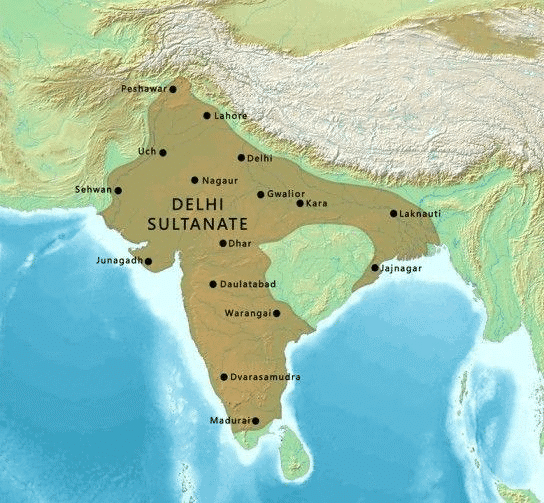
During the Ilbari Turk period, the Delhi Sultans faced internal rebellions, foreign invasions, and internal disputes.
Internal Rebellions
- Ambitious Muslim Chiefs : Some rebellions were led by Muslim chiefs aiming for independence.
- Rajput Rajas and Zamindars : Others were led by Rajput rajas and zamindars wanting to expel Turkish rulers or exploit their weaknesses. These rajas and zamindars fought against the Turks and each other.
- Nature and Objectives of Rebellions : The rebellions had different natures and objectives, making it incorrect to label them as ‘Hindu resistance.’
- Provincial Autonomy : India’s size and geography made central rule difficult. Provincial governors were given considerable autonomy, which, combined with strong local sentiments, led to declarations of independence from Delhi.
- Regional Sentiments : Regional sentiments, stronger between the seventh and twelfth centuries, helped local rulers rally opposition against Delhi.
- Bengal and Bihar : Continuously resisted Delhi’s rule.
- Khalji Chief Muhammad bin Bakhtiyar Khalji : Expelled Sena king Lakshmana Sena from Lakhnauti.
- Iwaz, later Ghiyasuddin Sultan : Asserted independence in Lakhnauti, extended authority over Bihar, and collected tribute from regions like Jajnagar, Tirhut, Bang, and Kamrup.
- Iltutmish’s Campaign : In 1225, Iltutmish marched against Iwaz, who initially submitted but later asserted independence.
- Iltutmish’s Son : Governed the area and secured it from trouble, as recorded by Barani.
Southern and Western Frontiers
- Under Aibak : Turks captured forts and overran parts of eastern Rajasthan, including Tijara, Bayana, Gwaliyar, Kalinjar, Ranthambhor, Nagaur, Ajmer, and Nadol. These areas, once part of the Chauhan empire, were still ruled by Chauhan families.
- Aibak’s Campaign : Aibak’s operations were part of the campaign against the Chauhan empire.
- Subsequent Period : Turks struggled to defend their gains in eastern Rajasthan and maintain their hold on redoubts protecting Delhi and the Gangetic region, failing to advance into Malwa and Gujarat.
Iltutmish's Campaigns against Rajputs
- Initial Successes (1226-1236): Iltutmish, facing challenges in the northwest, began to regain control over territories like Kalinjar, Gwaliyar, and Bayana from the Rajputs. He successfully invested Ranthambhor, forcing its ruler to accept Turkish suzerainty, and captured Jalor, crucial for his ambitions towards Gujarat.
- Failed Expeditions: Iltutmish attempted to extend his control over Gujarat and Malwa but faced strong resistance. The Chalukyas of Gujarat and the Paramaras of Malwa repelled his forces. However, Iltutmish managed to raid and plunder areas in Malwa, including Ujjain and Raisina.
- Eastern Campaigns: In the east, Iltutmish reclaimed Bayana and Gwaliyar but struggled against the Rajputs of Baghelkhand. His efforts to establish Turkish dominance in eastern Rajputana were initially successful, but his death created a power vacuum.
Aftermath of Iltutmish's Death
- Rajput Resurgence: Following Iltutmish’s death, many Rajput rulers, including the Bhatti Rajputs in Mewat, reclaimed territories and rejected Turkish suzerainty. They isolated Bayana and expanded their influence towards Delhi, even recovering the fort of Gwaliyar.
- Balban’s Efforts: Balban, Iltutmish’s successor, attempted to conquer Ranthambhor and reclaim Gwaliyar but faced failures in these endeavors. However, he conducted a brutal campaign in Mewat, securing Delhi from Mewati threats for nearly a century. Balban also maintained firm control over Ajmer and Nagaur, consolidating Turkish rule in eastern Rajasthan.
- Fragmentation among Rajputs: The internal conflicts among Rajput rulers during this period inadvertently aided the Turks, preventing a united Rajput front against Turkish rule.
Consolidation and Expansion
- Strengthening the Sultanate: The establishment of a robust monarchy, successful repulsion of Mongol invasions, and consolidation of territory in the Ganga doab and eastern Rajasthan set the stage for the Delhi Sultanate’s expansion into western India and the Deccan.
- Turkish Slavery: The term "owned" was used to differentiate imported Turkish slaves meant for military service from local slaves used for domestic or economic purposes.
- Mongol Defeat: The Mongols faced their first defeat in 1260 near Jerusalem at the hands of the Egyptians.
|
216 videos|852 docs|219 tests
|
FAQs on Old NCERT Summary (Satish Chandra): The Delhi Sultanate - I (Circa 1200-1400) - History for UPSC CSE
| 1. What were the main challenges faced by the Mamluk Sultans in establishing a strong monarchy in the Thirteenth Century? |  |
| 2. How did the Mongol invasions impact the Mamluk Sultanate and the Delhi Sultanate during the Thirteenth Century? |  |
| 3. What were the internal rebellions that the Delhi Sultanate faced during the Thirteenth Century? |  |
| 4. What were the territorial challenges faced by the Delhi Sultanate in the Thirteenth Century? |  |
| 5. How did the downfall of the Mamluk Sultans in the Thirteenth Century occur? |  |






















